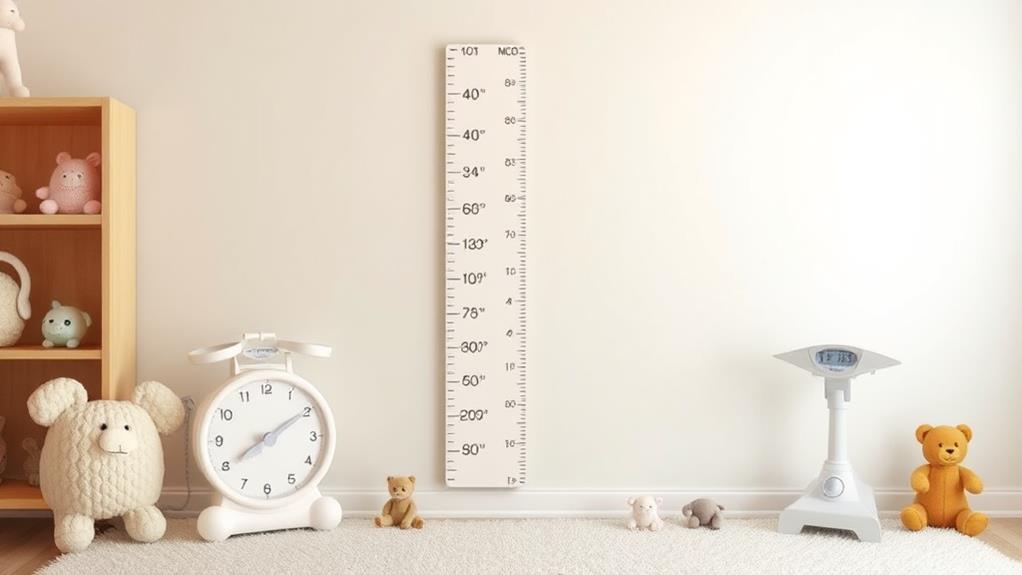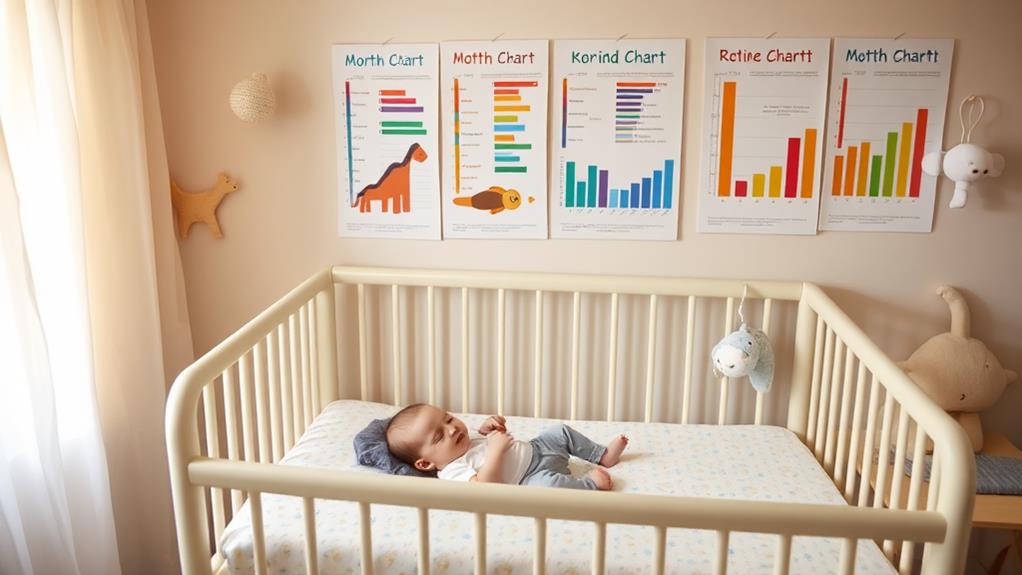As a parent, keeping track of your 2-month-old's growth is crucial for ensuring their health and development. You might find growth charts particularly useful, as they provide a clear visual representation of your baby's weight, length, and head circumference. By regularly monitoring these measurements, you can identify trends and patterns that may raise questions or affirm progress. Understanding how to interpret these charts can be the key to knowing when to celebrate milestones or seek advice, but there are nuances you won't want to overlook. What does this mean for your baby's unique journey?
Understanding Growth Charts

When it comes to tracking your 2-month-old's growth, understanding growth charts can be incredibly helpful. These charts provide a visual way to see how your baby's weight, length, and head circumference compare to other infants of the same age and sex.
You'll often find growth charts divided into percentiles, which show where your child falls in relation to others. For example, if your baby is in the 50th percentile for weight, it means they weigh more than 50% of babies their age.
Using growth charts gives you a sense of your baby's growth trends over time. You can see if they're consistently gaining weight and length, which is vital for their overall health.
Key Milestones for 2-Month-Olds
At two months old, your baby is reaching several key milestones that indicate their development is on track.
At this age, you might notice they can hold their head up for short periods when lying on their tummy. This is a sign of strong neck muscles developing, which is crucial for future milestones.
You may also see your little one starting to track objects with their eyes. This means they're beginning to focus and engage with the world around them. They might even show interest in your face, responding with coos or smiles when you talk to them.
Additionally, your baby may be starting to make soft sounds, like gurgles or coos, showing early communication skills. These vocalizations are important for their social development, as they learn to express themselves.
It's also common for two-month-olds to exhibit a startle reflex, where they quickly extend their arms and legs in response to sudden noises. This reflex is part of their developing nervous system.
As you observe these milestones, remember that each baby is unique, and development can happen at different paces.
Celebrate these wonderful achievements together!
Height and Weight Percentiles

Understanding your baby's height and weight percentiles is essential for tracking their growth and development.
These percentiles help you see how your baby's measurements compare to others their age. When you find out your baby's height and weight percentiles, you can gain insights into their overall health.
For instance, if your baby is in the 75th percentile for weight, that means they weigh more than 75% of babies their age. This doesn't necessarily mean they're overweight; it's just a way to understand their growth pattern.
Similarly, if they're in the 25th percentile for height, they're shorter than 75% of their peers. Both numbers are vital in assessing whether your baby is growing at a healthy rate.
Importance of Regular Monitoring
Regular monitoring of your 2-month-old's growth is crucial for ensuring their healthy development. By tracking their weight, height, and head circumference, you can spot any potential issues early on. This information helps you and your pediatrician understand if your baby is growing at a healthy rate. Each child is unique, so knowing their growth patterns can give you peace of mind.
Regular check-ups allow you to celebrate milestones, like when your little one starts to gain weight consistently or grows taller. It's also a chance to discuss any concerns you might have, whether it's about feeding habits or sleep patterns. You'll learn what's typical for their age and how to adjust your approach if needed.
Additionally, consistent monitoring can help identify any developmental delays. If your baby isn't meeting expected growth benchmarks, early intervention can make a significant difference.
Tips for Healthy Growth

Monitoring your baby's growth is just the beginning; there are several practical steps you can take to promote healthy development during these early months.
First, ensure your little one gets enough nourishment. Breastfeeding or formula feeding should be your main focus, as it provides essential nutrients for growth. Aim to feed your baby on demand, which helps them develop a healthy feeding pattern.
Next, encourage tummy time. It's crucial for strengthening your baby's neck and shoulder muscles. Just a few minutes a day, gradually increasing the time as they grow, can make a big difference.
Also, create a stimulating environment. Talk, sing, and read to your baby regularly. Your voice and interaction are vital for their cognitive development.
Lastly, establish a consistent sleep routine. Babies thrive on structure, so try to create a calming bedtime environment.
When to Consult a Pediatrician
As your baby grows, knowing when to consult a pediatrician can provide peace of mind.
It's essential to monitor your little one's health and developmental milestones closely. If you notice your 2-month-old isn't gaining weight, seems unusually lethargic, or isn't responding to sounds and sights, it's time to reach out.
Additionally, if your baby has a fever higher than 100.4°F (38°C), persistent crying that you can't soothe, or any signs of difficulty breathing, don't hesitate to call your pediatrician. These could indicate underlying issues that need professional attention.
Another important reason to consult your pediatrician is if you have concerns about feeding.
If your baby isn't latching well, isn't feeding for extended periods, or seems to be eating significantly less than expected, it's a good idea to seek guidance.
